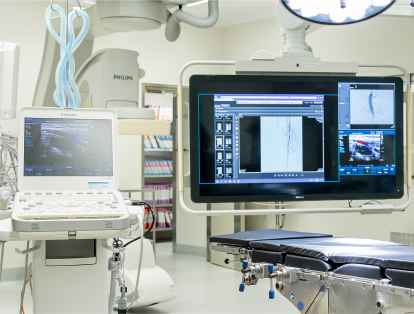As the colder months progress, we have seen an increase in Abdominal Aortic Aneurysm (AAA) rupture. Cold weather does appear to increase the rupture risk of patients with aneurysmal disease and highlights how dangerous this condition can be.
Endovascular Aortic Stenting revolutionised the treatment for AAA. This minimally invasive approach is where a stent graft (a fabric covered metallic stent) is introduced via the femoral artery in the groin and placed within the AAA to reline the abnormal weaker artery and prevent the risk of rupture. This approach is well tolerated even in elderly patients and discharge usually occurs within 3-4days.
New developments in stent graft design have reduced the size of the devices used making the procedure even less invasive. Excellent x-ray imaging available in Hybrid operating theatres has also expanded the safety of the procedures.
A new device that places a suture into the arterial wall, prior to inserting the stent graft, allows the whole procedure to be performed through a 5mm incision in each groin, remarkable compared with the very large incisions required for open surgical repair. A true minimally invasive approach.
Aortic aneurysms are complex though, and require careful imaging and assessment to facilitate the best and safest treatment.
